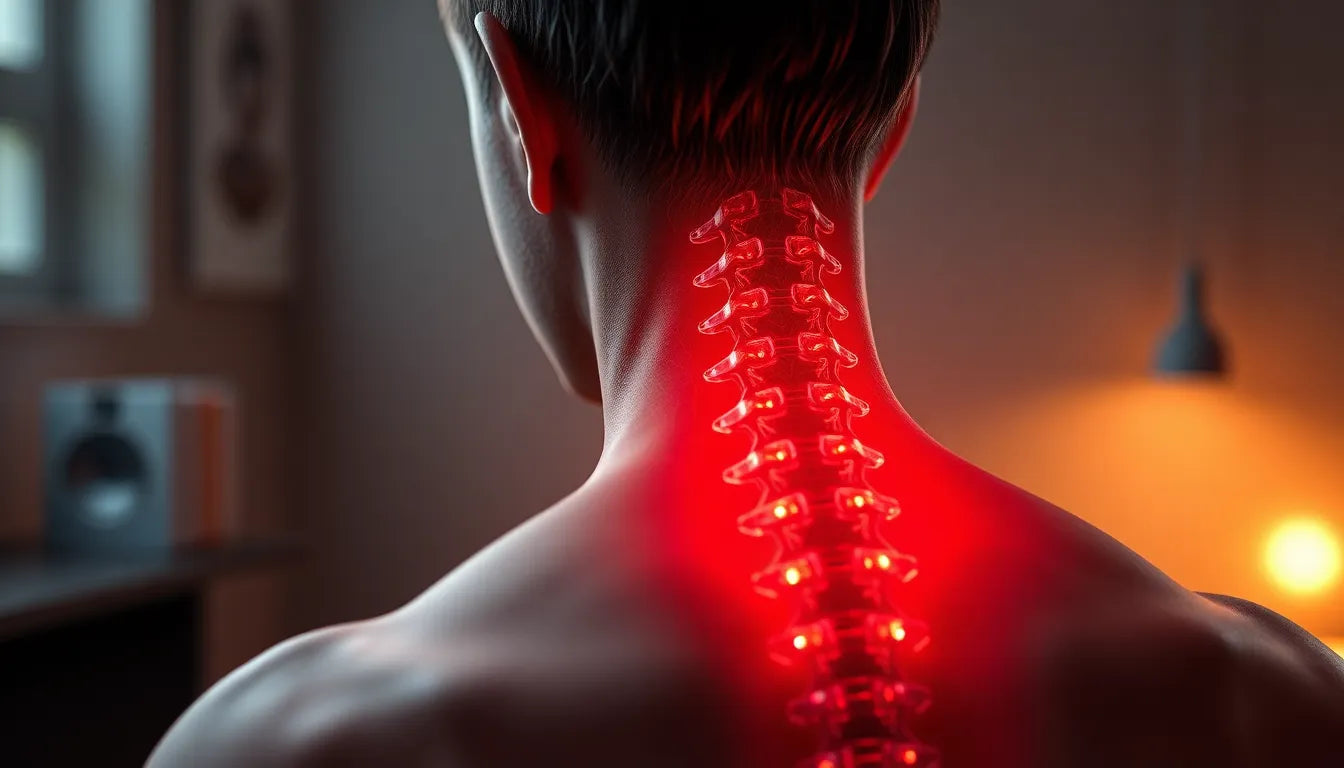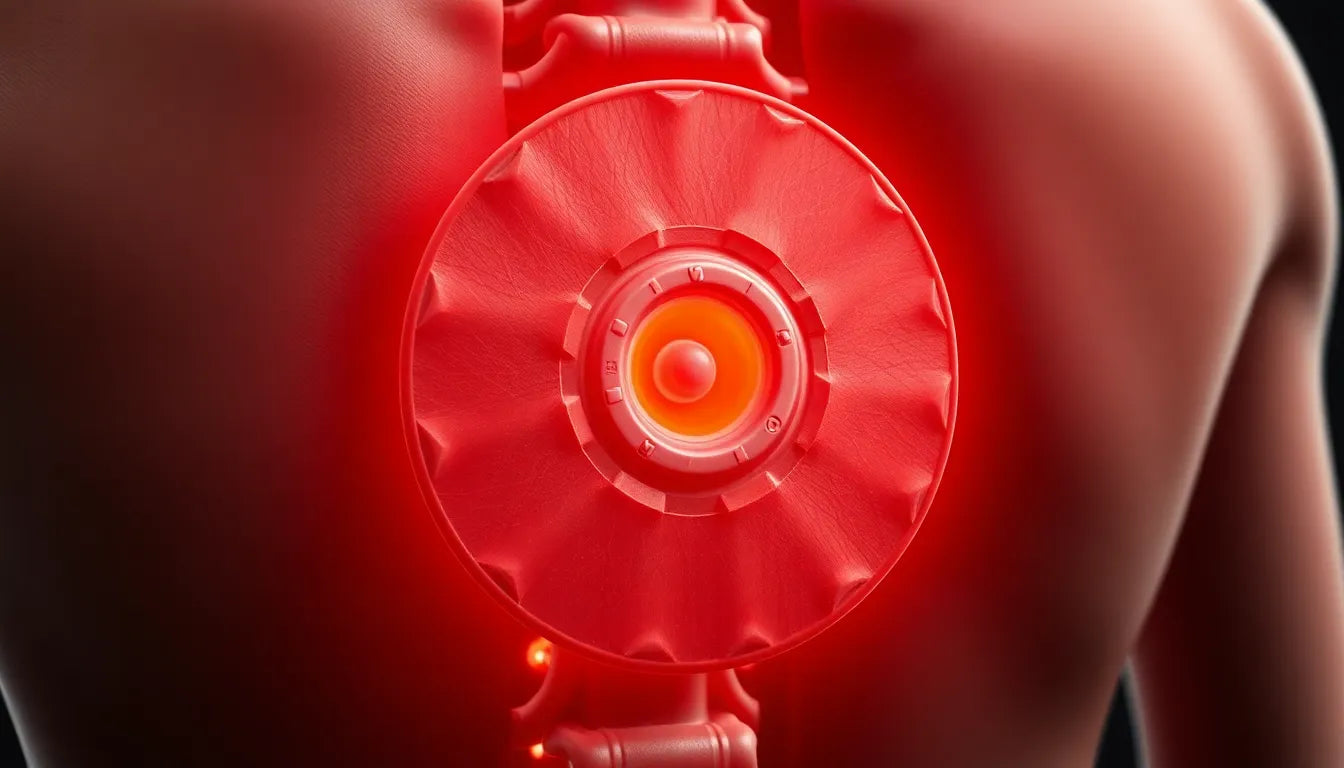Imagine waking up one morning with a sharp, unexplained pain shooting down your leg. You visit your doctor and hear terms like "herniated disc" and "bulging disc." What do they mean, and how do they differ? Understanding these conditions is crucial for effective treatment and symptom management, especially when dealing with spinal health.
Spinal discs play a vital role in the body, acting as cushions between the vertebrae. These discs are composed of a tough outer layer and a gel-like core. They allow for flexibility and absorb shock, helping you move comfortably and maintain your posture. However, when these discs become compromised, they can lead to significant discomfort and mobility issues.
Why understanding the difference matters
Distinguishing between a herniated disc and a bulging disc is essential because it influences the approach to treatment and management of symptoms. While both conditions can cause back pain and discomfort, their severity and treatment options may differ significantly.
A bulging disc occurs when the disc's outer layer protrudes outward, similar to a tire losing air. This condition often results in the disc "sagging" but not rupturing. On the other hand, a herniated disc involves a crack or tear in the outer layer, allowing the inner gel to leak out. This is often compared to a "jelly donut" where the jelly leaks from a crack. The leaked material can press on nearby nerves, leading to more severe symptoms.
By understanding these differences, individuals can better navigate their treatment options and work with healthcare providers to develop an effective plan. Whether managing the condition through conservative treatments like physical therapy and medications or considering surgical options in more severe cases, knowing the specifics of your diagnosis is the first step toward relief.
Understanding the anatomy of bulging and herniated discs
To fully grasp the differences between a bulging disc and a herniated disc, it's essential to explore their anatomical distinctions. A bulging disc occurs when the outer layer of the disc, known as the annulus fibrosus, extends outward without any rupture. This condition can be likened to a tire losing air, where the disc "sags" but the inner gel-like core, or nucleus pulposus, remains contained. Visualizing this can help in understanding why a bulging disc might not always cause severe symptoms unless it presses on a nerve.
In contrast, a herniated disc, sometimes referred to as a "ruptured" or "slipped" disc, involves a tear or crack in the outer layer. This allows the inner gel to leak out, which can directly impinge on nearby nerves or the spinal cord. This condition is often compared to a "jelly donut" where the jelly escapes through a break, leading to potential nerve irritation and more pronounced symptoms.
Comparing symptoms and severity
While both bulging and herniated discs can produce similar symptoms such as pain, numbness, tingling, or weakness in the limbs, the severity often varies. Herniated discs are typically more serious due to the potential for the inner disc material to irritate or inflame nearby nerves. This can result in acute and intense pain, and in severe cases, muscle weakness or even bladder and bowel dysfunction.
On the other hand, bulging discs may cause little to no symptoms unless the bulge becomes significant enough to compress a nerve. This makes them more common but often less severe than herniated discs. Below is a table comparing the symptoms of both conditions:
| Condition | Common Symptoms |
|---|---|
| Bulging Disc | Mild pain, potential nerve pressure, often asymptomatic |
| Herniated Disc | Severe pain, radiating pain, nerve symptoms, possible muscle weakness |
Frequency and causes of disc issues
Bulging discs are more prevalent and are frequently associated with the natural aging process and gradual wear and tear. It's not uncommon for individuals over 40 to have some degree of disc bulging without experiencing symptoms. The condition is often a part of the body's natural degeneration.
Herniated discs, while less common, usually occur due to injury or more severe degeneration. They tend to require medical intervention more often due to their potential to cause significant discomfort and functional impairment. Lifestyle factors such as poor posture, occupational hazards, and lack of exercise can contribute to both conditions, emphasizing the importance of maintaining spinal health.
Diagnosis and treatment considerations
Accurate diagnosis of these conditions is typically achieved through MRI imaging, which helps confirm the presence and extent of bulging or herniation. However, it's crucial to note that not all visible disc issues on an MRI cause pain or require treatment. In many cases, conservative treatments such as anti-inflammatory medications, physical therapy, and activity modification prove effective.
Surgical intervention is usually reserved for severe cases, particularly with herniated discs that cause significant nerve compression or when conservative measures fail to alleviate symptoms. Understanding the nature of your disc issue helps guide the appropriate treatment plan, ensuring a path to relief and improved quality of life.
Diagnosis and treatment options for disc issues
When it comes to diagnosing herniated and bulging discs, MRI imaging is the gold standard. This non-invasive technique provides a detailed view of the spinal discs, helping to confirm the presence and extent of any abnormalities. It's important to understand that not all disc issues visible on an MRI cause pain or necessitate treatment. Many individuals with bulging discs, for instance, may remain asymptomatic and require no intervention.
For those experiencing symptoms, conservative treatments are often the first line of defense. These may include anti-inflammatory medications to reduce swelling and pain, physical therapy to strengthen the muscles supporting the spine, and activity modification to avoid movements that exacerbate symptoms. These approaches aim to alleviate discomfort and enhance mobility without the need for invasive procedures.
Surgical intervention is typically considered a last resort, reserved for cases where severe symptoms persist despite conservative efforts. This is more common with herniated discs, especially when significant nerve compression leads to debilitating pain or functional impairment. Surgery may involve removing the portion of the disc pressing on a nerve or, in some cases, replacing the damaged disc entirely.
Prevention and lifestyle strategies for spinal health
Preventing disc problems involves adopting a proactive approach to spinal health. Maintaining good posture is crucial, as slouching or improper alignment can place unnecessary stress on the spinal discs. Ergonomic practices, especially for those in sedentary jobs, can mitigate the risk of disc degeneration. This includes using chairs that support the natural curve of the spine and setting up workstations that promote proper alignment.
Regular exercise also plays a vital role in preventing disc issues. Activities that strengthen the core muscles, such as yoga or pilates, provide essential support to the spine and help maintain flexibility. Additionally, avoiding heavy lifting or learning proper lifting techniques can prevent undue strain on the discs.
Frequently asked questions
What is the most common cause of a herniated disc?
A herniated disc often results from heavy lifting, sudden pressure, or injury. It can also occur due to age-related degeneration, where the disc becomes less flexible and more susceptible to tearing.
Can a bulging disc heal on its own?
Yes, many bulging discs improve over time with conservative treatment. Rest, physical therapy, and anti-inflammatory medications can help alleviate symptoms and promote healing.
Is surgery always necessary for a herniated disc?
No, surgery is not always necessary. Most herniated discs can be managed with non-surgical treatments. Surgery is considered when conservative measures fail, or if there is significant nerve compression causing severe pain or neurological deficits.
How can I prevent disc problems?
To prevent disc problems, maintain good posture, engage in regular exercise, and avoid improper heavy lifting. Incorporating ergonomic practices in your daily routine can also support spinal health.
What is the difference between a 'slipped' and 'herniated' disc?
"Slipped disc" is a lay term often used interchangeably with "herniated disc." Technically, they refer to the same condition where the inner gel of the disc protrudes through a tear in the outer layer.
Understanding the distinct pain of herniated versus bulging discs is crucial for effective management and treatment. By recognizing the differences and adopting preventive measures, individuals can take proactive steps towards maintaining spinal health and improving their quality of life.
Sources
- Penn Medicine. "Bulging Disc vs. Herniated Disc: What's the Difference?"
- ADR Spine. "Herniated Disc vs. Bulging Disc: Understanding the Differences."
- Miami Neuroscience Center. "Herniated Disc vs. Bulging Disc: Key Differences."
- Fayaz Neurosurgery. "Bulging vs. Herniated Disc: Identifying the Symptoms."
- Neurosurgery One. "Understanding Bulging and Herniated Discs: A Comprehensive Guide."
- The Spine and Rehab Group. "Bulging Disc vs. Herniated Disc: What You Need to Know."
- Orlando Orthopaedic. "Herniated Disc vs. Bulging Disc: Causes and Treatments."
- Neurosurgeons of New Jersey. "Bulging Disc vs. Herniated Disc: Diagnosis and Management."


















